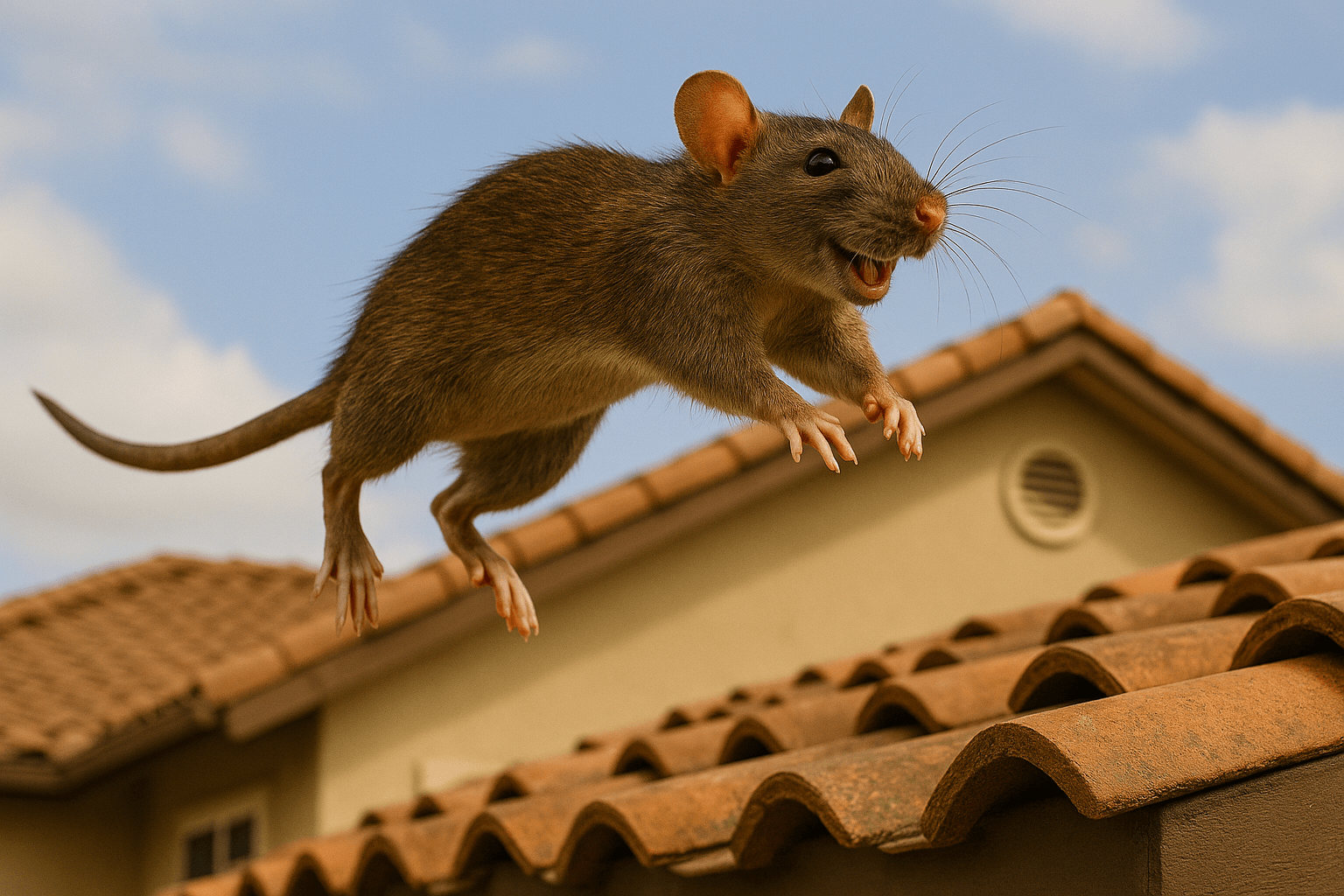The Sneaky Desert Home Hazard: How to Handle Roof Rats 🐀
Living in the desert has its perks—stunning sunsets, warm weather, and a unique lifestyle. But there’s a hidden issue many homeowners don’t realize until it’s too late: roof rats. 🐀 We recently dealt with this problem ourselves, and I’m sharing what we learned to help you avoid the headache!What Surprised Me About Roof Rats
Roof rats are sneaky little pests that can cause big problems in desert homes. Here’s what caught me off guard:- Fruit Trees Are a Magnet: Citrus, date, and fig trees were like a buffet for roof rats. Fallen fruit in the yard only made it worse, attracting them straight to our property.
- Tiny Openings, Big Problems: Even small gaps around air conditioning units, rooflines, and vents can let pests inside. If a rat’s head can fit through an opening, its body can too—yikes!
- Expensive Damage: One roof rat can wreak havoc, chewing through wires, damaging insulation, and leading to costly repairs if not caught early. We’re talking hundreds or even thousands of dollars in damage if left unchecked.
My First (Not-So-Effective) Rat Expulsion Mission
When we first heard scurrying in the ceiling, I launched my own “rat expulsion mission.” Armed with a broom handle, I banged on the ceiling to scare the rat away. It worked… sort of. The noise stopped temporarily, but as soon as I got to higher ceilings, like in the living room, it became impossible to reach—and sure enough, the sound came back. 🙈 Let’s just say this wasn’t my finest strategy!What Actually Worked: Professional Help and Prevention
We called in a professional to tackle the problem correctly, and here’s what made the biggest difference:- Sealing Entry Points: In the desert, roofs need to breathe, so builders typically design them with ventilation that allows airflow. But we discovered that over time, rats can chew through this mesh, creating easy access points. The pro replaced the old, chewed mesh and sealed every opening with sturdy, rat-proof wire mesh, focusing on rooflines and HVAC connections. This was a game-changer—no more entry points, no more rats.
- Yard Maintenance: We started removing fallen fruit from the yard daily and trimmed tree branches away from the house, cutting off the rats’ easy access to our roof.
A Word of Caution About Traps and Poison
Some pest control companies use snap traps or poison bait to deal with roof rats, but poison can be risky. Rats often die in hard-to-reach places (like your walls), and the poison can harm pets or local wildlife, which is a big concern in desert ecosystems. We opted for safer alternatives, which I’ll share below.Alternatives for Roof Rat Control
Here are some effective methods to consider for dealing with roof rats, along with their pros and cons:Electronic Rat Traps (e.g., Victor or Rat Zapper)
- Pro: Delivers a quick, humane kill with no poison; safer for homes with pets or kids.
- Con: Requires regular monitoring and emptying, which can be a bit hands-on.
Live Traps (e.g., Havahart)
- Pro: Humane capture and release if done carefully; safer for pets and wildlife.
- Con: Labor-intensive, and relocation isn’t legal in all areas—check your local regulations first.
Natural Deterrents (e.g., Peppermint Oil Sprays, Ultrasonic Devices)
- Pro: Pet-safe and eco-friendly; easy to apply around entry points like vents or rooflines.
- Con: Less effective for active infestations; best used as a supplement to other methods.
Professional Exclusion Work
- Pro: Permanently seals entry points, preventing rats from getting in at all; the best long-term solution.
- Con: Upfront cost for professional sealing and inspection, but worth it for peace of mind.


